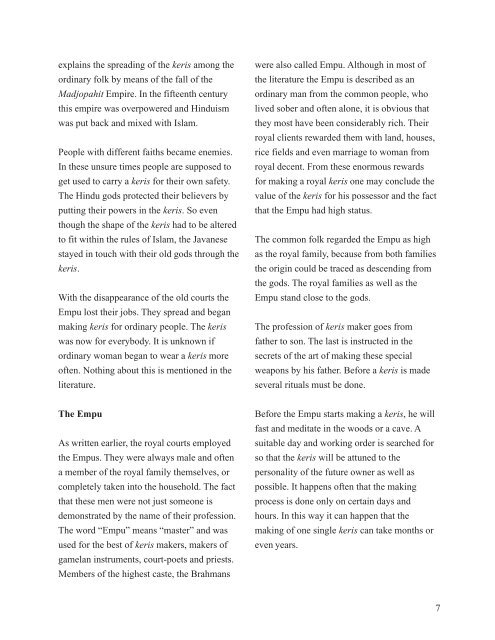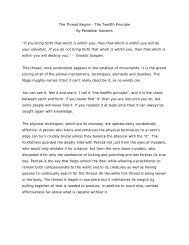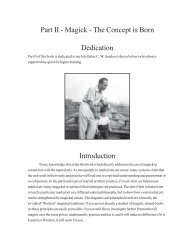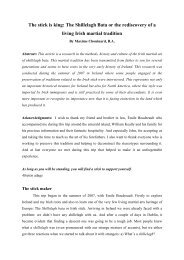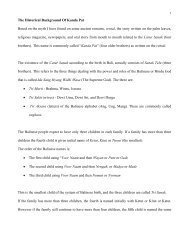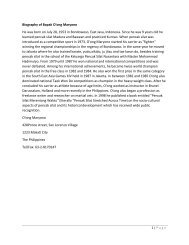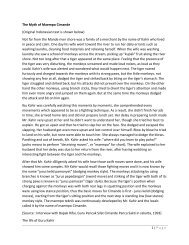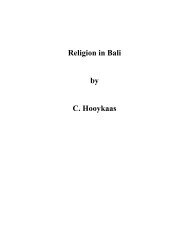Tenaga Dalam - Pukulan Cimande Pusaka
Tenaga Dalam - Pukulan Cimande Pusaka
Tenaga Dalam - Pukulan Cimande Pusaka
You also want an ePaper? Increase the reach of your titles
YUMPU automatically turns print PDFs into web optimized ePapers that Google loves.
explains the spreading of the keris among the<br />
ordinary folk by means of the fall of the<br />
Madjopahit Empire. In the fifteenth century<br />
this empire was overpowered and Hinduism<br />
was put back and mixed with Islam.<br />
People with different faiths became enemies.<br />
In these unsure times people are supposed to<br />
get used to carry a keris for their own safety.<br />
The Hindu gods protected their believers by<br />
putting their powers in the keris. So even<br />
though the shape of the keris had to be altered<br />
to fit within the rules of Islam, the Javanese<br />
stayed in touch with their old gods through the<br />
keris.<br />
With the disappearance of the old courts the<br />
Empu lost their jobs. They spread and began<br />
making keris for ordinary people. The keris<br />
was now for everybody. It is unknown if<br />
ordinary woman began to wear a keris more<br />
often. Nothing about this is mentioned in the<br />
literature.<br />
were also called Empu. Although in most of<br />
the literature the Empu is described as an<br />
ordinary man from the common people, who<br />
lived sober and often alone, it is obvious that<br />
they most have been considerably rich. Their<br />
royal clients rewarded them with land, houses,<br />
rice fields and even marriage to woman from<br />
royal decent. From these enormous rewards<br />
for making a royal keris one may conclude the<br />
value of the keris for his possessor and the fact<br />
that the Empu had high status.<br />
The common folk regarded the Empu as high<br />
as the royal family, because from both families<br />
the origin could be traced as descending from<br />
the gods. The royal families as well as the<br />
Empu stand close to the gods.<br />
The profession of keris maker goes from<br />
father to son. The last is instructed in the<br />
secrets of the art of making these special<br />
weapons by his father. Before a keris is made<br />
several rituals must be done.<br />
The Empu<br />
As written earlier, the royal courts employed<br />
the Empus. They were always male and often<br />
a member of the royal family themselves, or<br />
completely taken into the household. The fact<br />
that these men were not just someone is<br />
demonstrated by the name of their profession.<br />
The word “Empu” means “master” and was<br />
used for the best of keris makers, makers of<br />
gamelan instruments, court-poets and priests.<br />
Members of the highest caste, the Brahmans<br />
Before the Empu starts making a keris, he will<br />
fast and meditate in the woods or a cave. A<br />
suitable day and working order is searched for<br />
so that the keris will be attuned to the<br />
personality of the future owner as well as<br />
possible. It happens often that the making<br />
process is done only on certain days and<br />
hours. In this way it can happen that the<br />
making of one single keris can take months or<br />
even years.<br />
7


